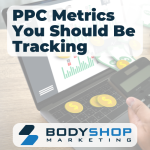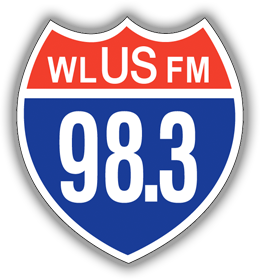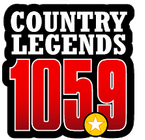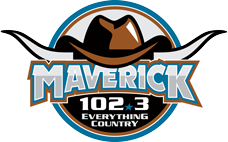Body Shop Marketing Shares the PPC Metrics Auto Body Shops Should Be Tracking
Every modern business needs a digital marketing strategy to thrive, and auto body shops are no exception. Today's customers locate nearby companies, compare prices, and even get a feel for a shop's reputation long before they pick up the phone or walk through the door. This reality underscores the importance of knowing what to do when you get a bad review, as it can significantly influence potential customers' perceptions.
To reach these potential customers, most businesses set up advertising campaigns on Google, known as pay-per-click (PPC) marketing. This makes PPC campaign optimization for auto body shops essential. Shops that don't know which PPC metrics to track, however, may not be getting the most out of their campaigns.
As a marketing company that focuses on body shops, Body Shop Marketing knows that independent auto shops often find it challenging to match the marketing power of large corporate collision centers. Knowing which PPC metrics to track can help body shops target their marketing efforts, understand their customers, meet their marketing goals, and maximize their return on investment.
To help family-owned and other independent body shops keep up with the competition, Body Shop Marketing shares the eight most important PPC metrics to keep in mind.
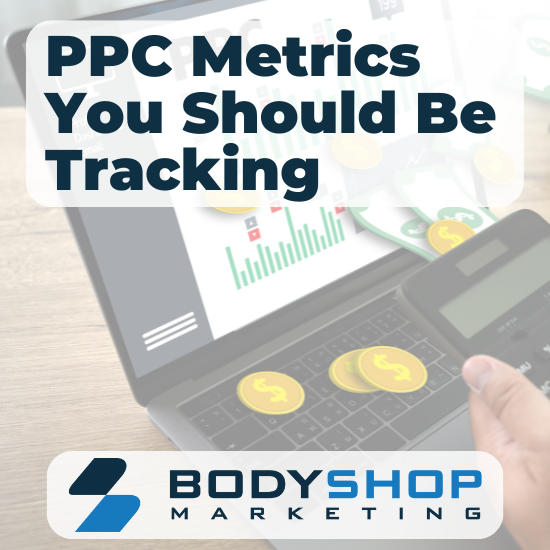
1. Clicks
Clicks show how frequently Google searchers click on an ad to reach a company website. This is often a potential customer's first point of contact with a business. By measuring clicks, a company gets an idea of how interesting, attractive, and relevant their ads are to their audience.
If an ad doesn't receive many clicks, the business may consider changing the text or pausing that campaign. If an ad does generate many clicks, however, companies may choose to increase their bid (the maximum price they are willing to spend on that ad).
2. Cost Per Click
One of the most essential PPC metrics, the average cost per click (CPC) shows how much it costs each time someone clicks on an ad. It's a basic measure of cost efficiency that divides total ad spend by the number of times people click on ads. Tracking CPC can help a body shop understand the return on investment, evaluate the quality of ads, and calculate the eventual cost per conversion.
3. Impression Share
In PPC terms, impressions are the number of views an ad receives. In other words, this metric indicates how many times a given ad has eyes on it. Impression share takes this a step further, showing how often customers view a company's ads compared to their competitors's ads. For example, if a certain body shop's impression share is 25%, it means 75% of the available impressions for that keyword belong to that business's competitors.
4. Click-Through Rate
Click-through rate (CTR) represents the percentage of impressions leading to clicks. A high CTR suggests that the ads are helpful and relevant for the targeted keywords. A low CTR, on the other hand, may mean an ad isn't attractive, it targets the wrong audience, or the business is spending money on the wrong keywords.
5. Conversion Rate
Like CTR, the conversion rate divides the total ad spend by the number of times someone interacts with a Google ad. Instead of defining an interaction as a click, however, this metric uses a more meaningful interaction that usually involves capturing a potential customer's contact information.
When setting up a CTR metric, auto body shops can choose the action they want to track depending on their campaign goals. They could define a conversion as submitting a contact form, signing up for an email newsletter, or scheduling an appointment online. Because these kinds of interactions are more likely to lead to business revenue than a simple click, CTR is one of the most influential PPC metrics for any company.
6. Cost Per Acquisition (CPA)
Also known as cost per conversion, cost per acquisition is another key metric that helps businesses measure their return on ad spend. CPA divides the total cost of conversions by the number of conversions, a figure that indicates the price an auto body shop pays for each customer it acquires. In short, CPA tells an auto body shop whether or not its PPC campaigns are profitable.
7. Quality Score (QS)
A quality score is a number between 1 and 10 that Google assigns to each ad in a campaign. Higher scores suggest that a company's ads and website are relevant to searchers looking for specific information. To determine the QS, Google evaluates factors like the CTR of a given ad and the landing page experience on a body shop's website.
8. Average Position
It's no secret that today's web users face a virtually unlimited amount of information and don't have a lot of time or patience to wade through it. That means that the higher the ad appears in search results, the more likely someone typically is to click on it.
The average position metric shows where a business's ad shows up compared to its competitors. For example, an auto body shop may see a position score of 2.5, which means a specific ad generally shows up between second and third position in Google ad results.
To determine the average position, Google uses a value known as ad rank. This includes both the quality of the ad and the budget a company allocates towards that ad.
For more information about PPC campaign optimization for auto body shops, including which PPC metrics to track or any other digital marketing topic, feel free to reach out to Body Shop Marketing. Their auto body marketing specialists can expertly set up and manage your PPC campaign. Contact Body Shop Marketing at hello@bodyshopmarketing.io or (855) 667-9648.

